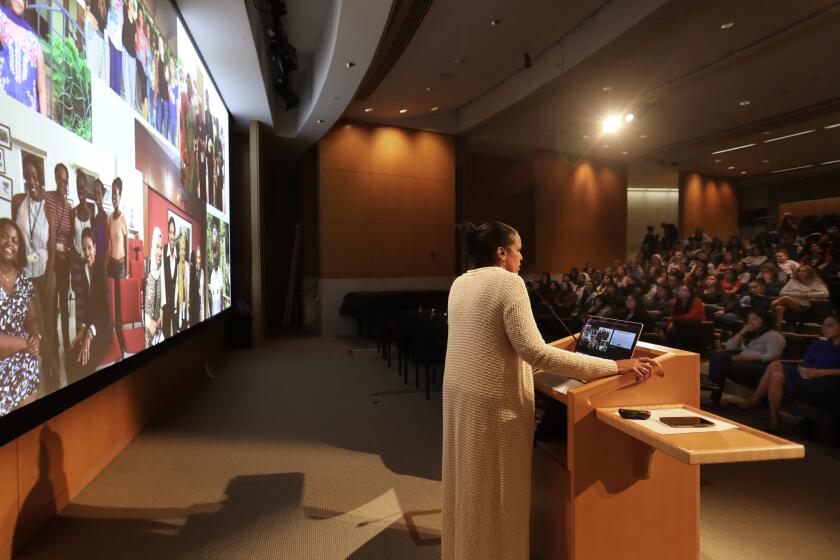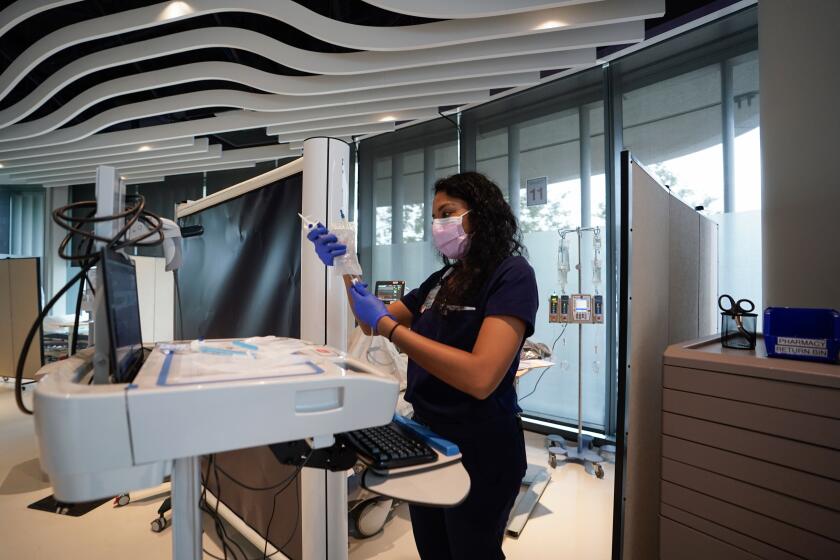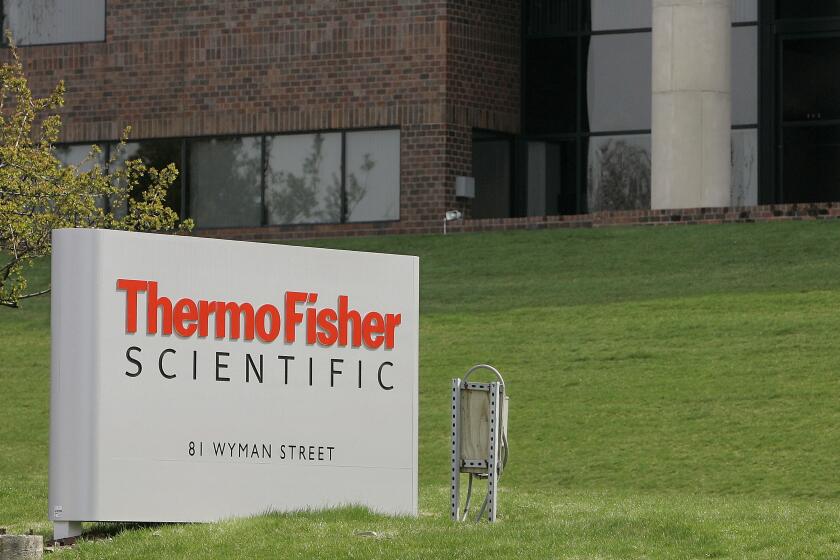Genetically modified bacteria-killing viruses used on patient for first time
Genetically engineered phages -- viruses that kill bacteria -- have been used for the first time to treat a patient struggling with a dangerous, persistent superbug infection.
The 15-year-old female patient had been infected with Mycobacterium abscessus, which is in the same genus as the bacterium that causes tuberculosis.
Researchers screened a database of more than 10,000 phages to find those active against the bacterium. They engineered three phages to make them more lethal.
The patient improved after treatment with the phage “cocktail,” according to a study published Wednesday in Nature Medicine. It’s online at j.mp/gephages.
It is “plausible” that the modified phages were responsible, the study said. But making a firm conclusion wasn’t possible, because only one patient was treated.
The treatment was modeled after the phage therapy given to UC San Diego professor Tom Patterson, who recovered after nearly being killed by his antibiotic-resistant infection. He got his phages from AmpliPhi, a San Diego biotech developing phage therapy; the U.S. Navy; and Texas A&M University.
Robert T. Schooley, a physician at UCSD who treated Patterson, was a study co-author.
Experts not involved with the study said the results represent an advance in phage therapy. That’s because it was the first use of genetically engineered phages, and the first time phages were used against this kind of bacteria.
Moreover, there is some evidence to suggest the treatment was effective, said Christine Schneider, a virologist at Carroll University in Wisconsin.
“In this type of study it is never possible to completely get at causation vs. correlation,” Schneider said by email. “As they state, however, the timing of the improvements did not correlate with changes in other treatments the patient was receiving and they do have some data that suggests the phages they added replicated in the patient.”
The study is “fantastic,” phage specialist Dr. Benjamin Chan of Yale University said by email.
“Well designed and nicely executed,”Chan said. “It certainly advances the field and contributes to a growing body of research suggesting that phage therapy could be applied in diverse infections.”
Derrick Fouts, a phage expert at the J. Craig Venter Institute in Rockville, Md., said finding the right combination of phages is tricky.
“One of the challenges that we face include being able to design phages that will work with any patient,” Fouts said by email. “This is because phages tend to be specific to one or a few strains of bacteria and people can be infected with different strains. So, a phage designed for bacteria in one person may not work in another.”
For engineered phages, another obstacle is getting the phages to “boot up,” that is, to replicate inside the bacteria and package their genome inside the newly produced phages.
“My team of researchers at JCVI in Rockville are working on new methods to overcome this boot-up obstacle for engineering of phages for the treatment of wound infections,” Fouts said.
Anyone getting phage therapy is likely to be very seriously ill. This patient’s condition was particularly precarious because a double-lung transplant had recently been performed to treat cystic fibrosis. In addition, the patient had diabetes, liver damage, and infection with Epstein-Barr virus.
As the infection progressed, the patient developed more skin lesions and the infection spread inside.
“Over 8 weeks, 20 additional skin nodules appeared on arms, legs, and buttocks, and the surgical wound showed areas of breakdown,” the study said.
A team led by biologist Graham Hatfull of the University of Pittsburgh, and Dr. Helen Spencer at Great Ormond Street Hospital in London, searched through the SEA-PHAGES database, compiled by students at the University of Pittsburgh.
They found three candidate phages in soil-dwelling mycobacteria that don’t infect people.
The phages infected Mycobacterium abscessus, but tended to live as permanent parasites.
Researchers took out a gene that allowed the phage to insert itself into the bacterial genome, said Dr. Schooley, the UCSD physician who treated Patterson. That turned the parasite into a killer, Schooley said.
The phages were introduced into the patient’s abdomen and also given intravenously. Over a six-month period, the lesions gradually reduced, but didn’t disappear.
“It is plausible that phage resistance is associated with reduced virulence,” the study said.
Patterson said he’s still recovering, but “feeling great.”
“This new case is very exciting and gratifying,” Patterson said. “For me, all of the time and pain and suffering that I went through, is made worthwhile by the lives that are being saved by phage therapy.”
Get U-T Business in your inbox on Mondays
Get ready for your week with the week’s top business stories from San Diego and California, in your inbox Monday mornings.
You may occasionally receive promotional content from the San Diego Union-Tribune.








